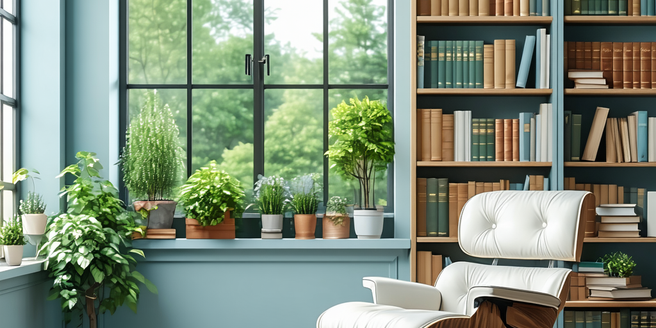
Understanding Emotional Intelligence and Its Importance
Emotional intelligence (EI) refers to the ability to understand and manage our own emotions, as well as empathize with others in a constructive manner. It plays a crucial role in personal and professional relationships, as higher EI contributes to better communication, conflict resolution, and leadership. People with strong EI are often more adaptable, able to navigate social complexities, and can maintain a positive outlook in challenging situations. By cultivating EI, individuals can improve their emotional awareness and sensitivity, enhancing their capacity for empathy and compassion. This emotional skill set not only fosters deeper connections with others but also aids in personal growth. As society becomes increasingly interconnected, understanding the value of emotional intelligence becomes paramount in creating healthier and more empathetic communities.
The Intersection of Art and Emotional Growth
Art serves as a powerful conduit for emotional exploration and expression, promoting personal growth and self-awareness. Engaging with art encourages individuals to tap into their emotional worlds, offering a platform for introspection and understanding. Whether through creating or experiencing art, people can process complex emotions and gain insights into their personal experiences. This process can lead to emotional catharsis, self-discovery, and greater emotional resilience. By connecting with art, individuals can learn to articulate their emotions more effectively, honing their emotional intelligence. Art also fosters empathy as viewers interpret and relate to the emotions conveyed in artistic works, bridging connections between individuals and cultures. Embracing art as a tool for emotional growth can deepen one’s understanding of themselves and others, fostering an emotionally intelligent and inclusive society.
Art Therapy: A Tool for Emotional Exploration
Art therapy provides a therapeutic framework where individuals can explore emotions through creative expression. This form of therapy harnesses the power of art-making to promote emotional healing and understanding. Participants are encouraged to express themselves visually, which can be particularly beneficial for those who find verbal communication challenging. Through art therapy, individuals can access buried emotions, improve self-esteem, and gain valuable insights into personal struggles. The non-judgmental and open-ended nature of art therapy allows for introspection and the safe exploration of one’s feelings and experiences. It also offers a constructive outlet for emotion regulation, reducing stress and anxiety. Art therapy empowers individuals to confront and process their emotions, facilitating emotional growth and resilience. As a complementary tool to traditional therapeutic practices, art therapy is a versatile approach for enhancing emotional well-being.
Practical Art Exercises to Boost Emotional Intelligence
Incorporating art exercises into daily life can be effective in boosting emotional intelligence. Simple activities like journaling through sketches, creating mood boards, or painting emotions can provide valuable insights into one’s emotional state. These exercises encourage self-reflection, enabling individuals to connect with their feelings more profoundly. Setting aside time for creative expression fosters mindfulness, reduces stress, and enhances emotional awareness. Collaborative art projects with family or friends can further develop empathy and communication skills, as participants must interpret and express emotions collectively. Engaging in art doesn’t require professional skills, and the focus is on the process rather than the product. By integrating these practices into daily routines, individuals can nurture a greater sense of self-awareness and emotional regulation, ultimately leading to improved emotional intelligence and interpersonal relationships.
Case Studies: Art’s Impact on Emotional Skills
Numerous case studies highlight the profound impact of art on developing emotional skills. In educational settings, art programs have been shown to enhance students’ emotional intelligence by providing them with artistic outlets for self-expression and communication. One case involved a group of adolescents who participated in a structured art program, which resulted in improved social interactions and emotional insights. Similarly, in clinical settings, art therapy has been used effectively to aid individuals dealing with trauma, anxiety, and depression. Participants exhibited increased self-esteem and better emotional regulation after engaging in regular art sessions. Such studies underscore the potential of art to facilitate emotional healing and resilience. By showcasing the positive outcomes of integrating art into various aspects of life, these cases illustrate art’s invaluable role in nurturing emotional skills and fostering personal development.
Tips for Incorporating Art into Daily Life for EQ
Incorporating art into daily life can be a rewarding strategy for boosting emotional intelligence. Start by setting aside regular time for creative activities, such as painting, drawing, or writing. Even small, consistent sessions can enhance emotional awareness and mindfulness. Keep a visual journal to document your emotions through images, helping you reflect on and understand your feelings over time. Explore various forms of art to find what resonates best with your personal expression. Attending art workshops or classes can also connect you with like-minded individuals, fostering social connections and empathy. Additionally, engage with art by visiting museums or exploring online galleries to broaden your emotional perspectives. Integrating art into daily routines not only enhances creativity but also builds emotional resilience, promotes self-awareness, and enriches personal well-being.
